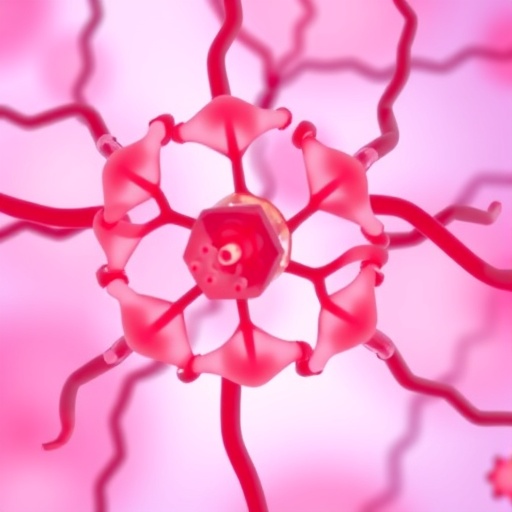
Recent research led by a team from the Spanish National Cancer Research Centre (CNIO) has shed light on a critical biological process linked to obesity and thermogenesis, the process by which the body generates heat. The study, published in Nature Communications, identifies the MCJ protein as a significant player in the regulation of brown fat, which is vital for converting energy into heat rather than storing it as fat. This breakthrough could pave the way for innovative obesity treatments by targeting mechanisms that enhance the body’s ability to burn fat.
Obesity is a global health crisis, with over 650 million individuals affected. This condition not only contributes to metabolic disorders but also elevates the risk of developing cancer. Understanding the body’s mechanisms for burning fat, particularly brown adipose tissue, is crucial for developing effective therapies against obesity-related diseases. The CNIO research highlights how the MCJ protein mediates the conversion of brown fat into thermal energy, thereby providing a biological basis for potential obesity interventions.
The findings showed that the removal of the MCJ protein from the mitochondria of obese mice led to an increased production of heat and a corresponding loss of body weight. This interaction underscores the role of the MCJ protein in fat metabolism and energy regulation. The team also discovered that transplanting brown fat devoid of the MCJ protein into obese mice resulted in significant weight reduction. This suggests that targeting MCJ could serve as a viable strategy to enhance thermogenesis in humans.
The research emphasizes the dual role of adipose tissue as both an energy storage site and a crucial regulator of energy balance in the body. The distinction between white and brown adipose tissue is fundamental; while white fat predominantly stores energy, brown fat plays an essential role in thermogenesis, utilizing energy to maintain body temperature, particularly in response to cold stimuli. The mechanism by which brown fat expends energy is complex. The discovery of the MCJ protein as a regulatory factor adds a new layer of understanding to how heat generation occurs in this type of tissue.
The team, led by Guadalupe Sabio and Cintia Folgueira, has been exploring alternative pathways involved in thermogenesis beyond the traditional understanding of brown fat activation. Previous research indicated that activation of brown fat could protect against obesity and related metabolic disorders. This current study is groundbreaking as it elucidates a previously unknown molecular pathway that could be manipulated for therapeutic purposes.
Significantly, the researchers highlighted that mice lacking the MCJ protein in their brown fat exhibited protection against obesity-related health issues, such as diabetes and dyslipidemia. This protection suggests that enhancing brown fat thermogenesis via modulation of the MCJ protein could offer a novel approach to treating the mounting challenges posed by obesity. Such a therapeutic strategy has the potential to address the root causes of obesity rather than merely focusing on weight loss.
The researchers caution that while the findings are promising, the next steps involve investigating whether blocking the MCJ protein impacts its functions in other tissues. These investigations are pivotal before clinical trials can begin in humans. The study opens up exciting avenues for future research, especially concerning the interactions between fat modulation and metabolic health.
In addition to its potential applications in treating obesity, this research may carry implications for cancer treatment. There exists a complex relationship between obesity, adipose tissue, and cancer development, including conditions such as cachexia, characterized by an extreme wasting syndrome found in many cancer patients. Thus, understanding how metabolic regulation through proteins like MCJ could influence tumor growth or cachexia could provide further insights into the intersection of metabolism and oncology.
Emerging evidence indicates that metabolic flexibility—the body’s ability to switch between burning carbohydrates and fats for energy—could significantly affect health outcomes. Enhancing brown fat function while inhibiting unhealthy fat storage pathways could contribute fundamentally to public health efforts. Such shifts in awareness and treatment could ultimately revolutionize how obesity and its related conditions are approached and managed.
The exploration of mitochondrial proteins such as MCJ not only enriches our biological understanding but also underscores the intricacies of energy metabolism. Recognizing the significance of these proteins illuminates pathways that might have otherwise remained obscure, contributing to our overall understanding of metabolic biology.
While research continues, the implications of these findings are vast, with the potential to transform clinical approaches to obesity treatment and metabolic health. As our understanding of the mechanisms at play deepens, we may soon see the development of targeted therapies aimed at boosting brown adipose tissue functionality and reversing diabetes and other metabolic disorders associated with obesity.
This research represents a significant advance in the scientific community’s understanding of obesity and metabolic disease, highlighting the importance of cellular mechanisms in disease prevention and treatment. As further studies emerge, the promise of harnessing the body’s innate mechanisms for energy regulation offers hope in the battle against one of the world’s most pressing health crises: obesity.
Subject of Research: Animals
Article Title: Modulation of brown adipose tissue thermogenesis by MCJ/DnaJC15
News Publication Date: 13-Jan-2025
Web References: Nature Communications
References: DOI: 10.1038/s41467-024-54353-4
Image Credits: Laura M. Lombardía / CNIO.
Keywords: Obesity, Mitochondrial proteins, Brown adipose tissue, Cancer research, Thermal energy, Cellular energy.





